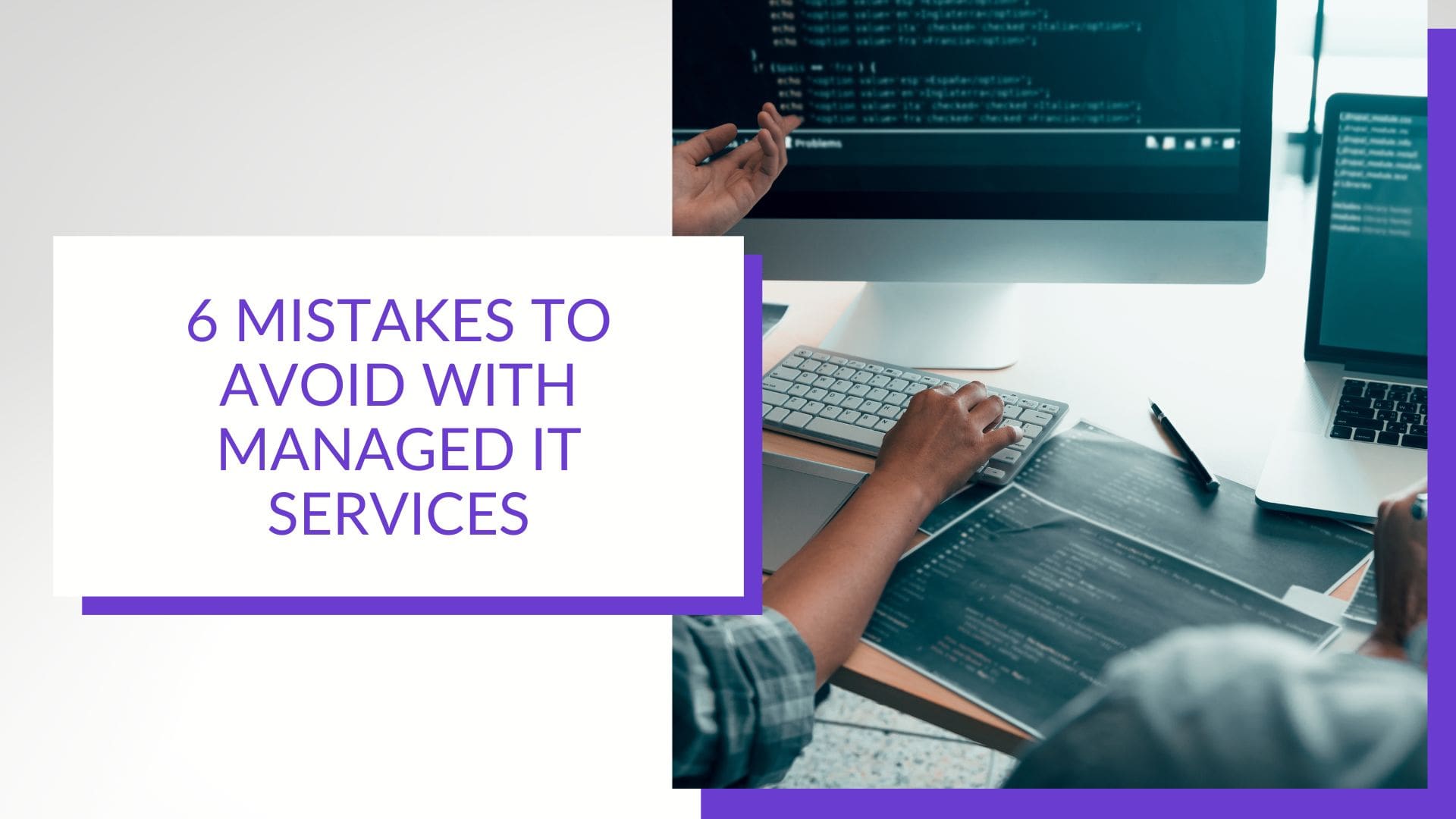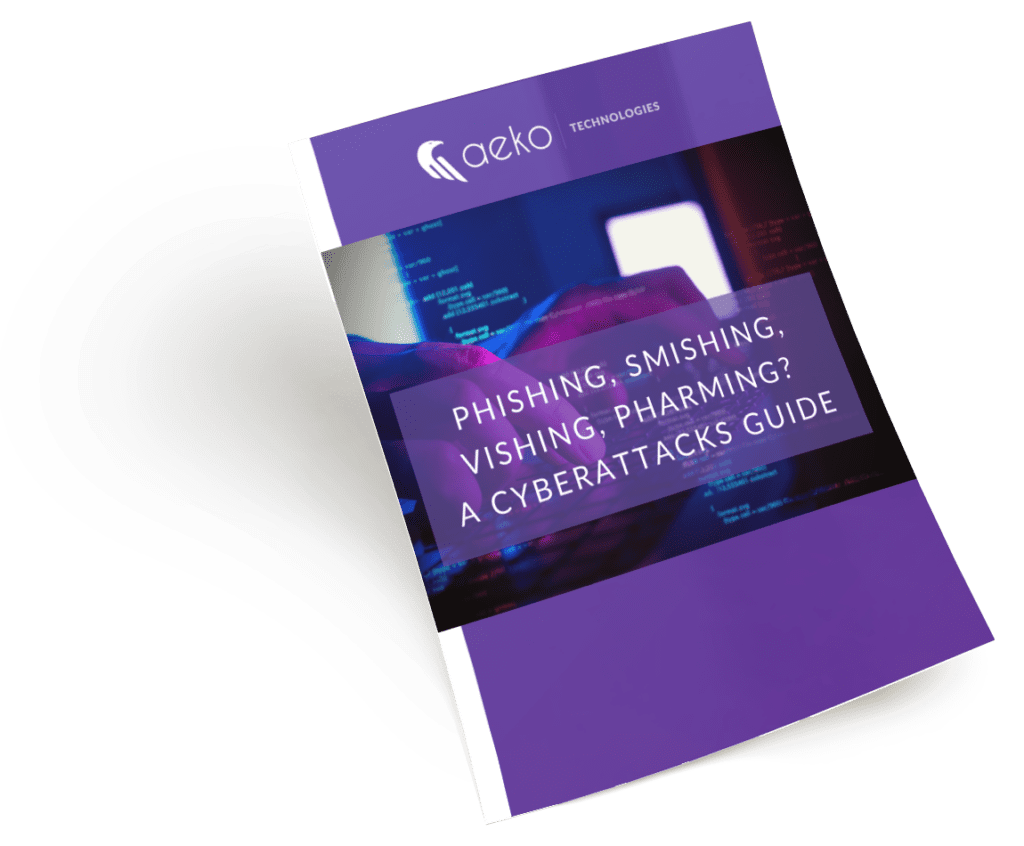
6 Mistakes You Can Avoid by Obtaining Managed IT Services for Small Businesses
Studies have shown that 50 percent of small businesses have been victims of cyber attacks, with 60 percent of those attacked going out of business due to the impact. This is proof of how easy it is to make IT mistakes as a small business. Technology is crucial to operations, but also comes with many dangers when you don’t take the proper precautions. That’s why experts suggest using managed IT services for small businesses.
Managing your technology on your own as a small business leaves you at risk for many mistakes that could be easily avoided if you worked with a managed service provider.
Here, we have listed six common mistakes small businesses make, and how using managed IT services for your small business can help you avoid them.
1. Thinking You Don’t Need a Managed Service Provider
Technology isn’t that confusing, right? You should totally be able to do it on your own. Wrong!
Many small businesses and startups operate with a DIY mindset. They think they don’t need to work with a managed service provider (MSP) and they can’t afford to spend their budget on a service they think they can handle on their own. This is the first mistake.
Technology is constantly evolving, which means so are cyber threat tactics. New threats lurk behind every corner, making it difficult for any business, let alone a small business, to keep up.
Thinking that you can’t afford an MSP is a big misconception. Companies like Aeko Technologies offer managed IT services for small businesses that are able to work around your tight budget. Today’s technology is not something you want to handle on your own. Doing so could put your entire business at risk.
2. Not Having a Backup Plan
Data loss can happen for a number of reasons, not just cyberattacks. No matter the reason for it, data loss is a risk that small businesses often overlook. They assume that they aren’t at risk of data loss. These assumptions and neglecting the important aspect of backup plans put SMBs especially at risk.
You need to have data backup and recovery plans in place in case of an emergency. Work with your MSP to formulate an in-depth plan of action in the case of a cyberattack, hardware malfunction, disaster or other emergency. Also make sure to test your plan of action before you need to actually use it. And most importantly, be sure you regularly back up your business’s important data!
3. Underestimating the Threat
One of the biggest mistakes you could make in your small businesses is underestimating the possibility of cybercrime. A misconception that most SMB owners have is that their business is too small to be the target of an attack. This is the opposite of true. The fact is, your business might be at even higher risk than larger corporations because cyber criminals know you likely don’t operate with the robust cybersecurity measures that large businesses have in place.
No business is too small to be a target, and you are never immune to the risks. It is important to have a proactive approach to mitigating any threat that might come your way.
4. Poor Password Management
The same passwords are reused 64 percent of the time. Don’t be part of this statistic!
Using weak passwords is a common mistake business owners (and lots of other people who use technology) make. This is a major risk area. If your team members use weak, reused or easily guessable passwords, just about anyone can figure out how to hack into their accounts. Try to use unique passwords for each and every account with a variety of letters, numbers and special characters. Also consider adapting additional security measures such as two-factor or multifactor identification.
For more information on password management for your business, download our super simple password management guide.
5. Neglecting Software Updates
You need to regularly update your systems and software. With each software update comes patches to possible weak spots or problem areas. People often neglect these updates because they can take time or seem unnecessary, and cybercriminals know it. They target specific areas in outdated software and they will prey on your vulnerabilities as soon as they see an opening.
You can easily avoid being a target by staying up to date with all your software and making sure you upgrade any outdated tech.
6. Not Providing Proper Employee Training
SMBs might not have any designated IT staff or experts on their team to keep employees trained on all the do’s and don’ts of technology. You can’t assume that your employees already know these things; that’s where major human errors occur.
As technology advances, you need to update your employees regularly on risks. Talk to your MSP about what new things employees should be trained on, and make sure they are properly informed about hot topics.
Many MSPs have download sheets offering information on phishing, password management and other key topics. Your MSP may also offer training for your employees or penetration testing for your organization.
Don’t Go IT Alone
Now is the time to act. If you haven’t already obtained a managed service provider, don’t wait! This list was just the tip of the iceberg when it comes to the technological aspects of running a business. There is so much more you need to learn in order to be successful and use your technology safely and to the best of its abilities. Contact us or book an appointment today to see if AEKO’s managed IT services for small businesses are right for you.
Are you aware of the most common cyberattack methods?
Did you know there are over 3.4 billion phishing emails sent every day? Phishing and other cybercriminal behavior are a lot more common than you’d think.
Our free “Phishing, Smishing, Vishing, Pharming? A Cyberattacks Guide” will inform you about cyberattack methods and give you the latest in data security tips.

